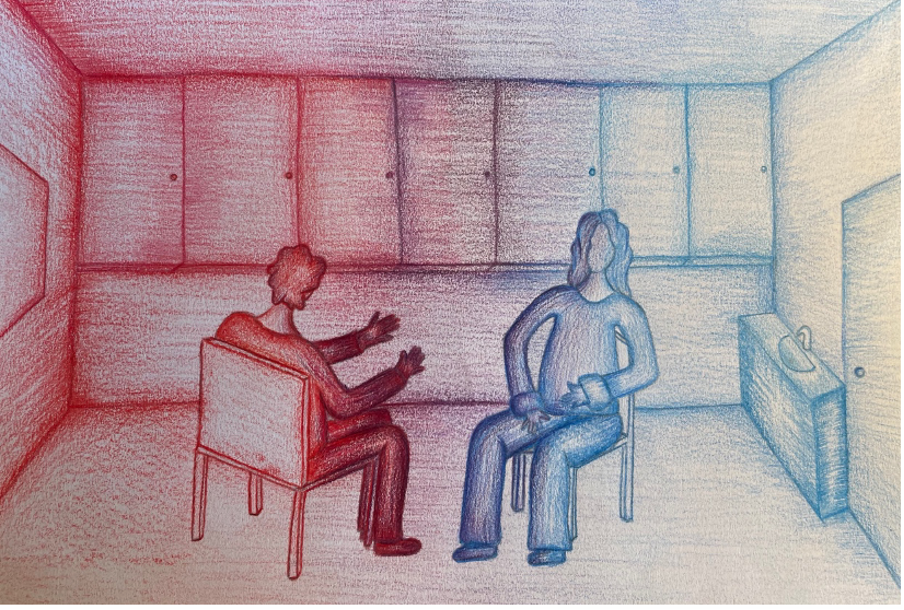“Third Space” by Ravleena Wasan

Reflection
Exploring the creative arts in health and illness, stood out to me as I have always had a passion for the arts. From a young age I have scribbled and doodled on pages and pavements, become different characters on stage, and performed music to anyone that would hear. Coming to medical school, I wanted to keep this creative side of me, as well as explore my interest in medicine and helping people. I volunteered with the Amber Trust alongside Adam Ockelford, a Professor of Music at the University of Roehampton, playing music for and to children with neurodegenerative diseases. This scheme has been put in place, not only to keep the children's love and passion for music alive, but also because research has shown that music can play a vital role in the lives of children with juvenile dementia. This experience sparked a thought in my head; ‘What else can the creative arts be used for in medicine?’
Upon reading about the patient-doctor relationship, I discovered this ‘space between’ the patient and the doctor. The key point I took from it was how important it is for us, as medical professionals, to also learn from the patients. It can be easy to see a patient for the disease or illness that they present with, rather than listening to them, appreciating their back story, and having compassion for what they have experienced. This enables the patient to have the space, and trust in you, to talk freely and comfortably with you about anything that they wish.
‘Winnicott has termed this space ‘the third space’, within which the contours of self and the other might be perceived, where mutual assertion and recognition might lead to the emergence of meaning and fresh perspectives.’
This ‘third space’, is a space which allows independent people to share the meaning of their existence, whilst acknowledging their own individuality. The colours red and blue, so different from each other, like a doctor and their patient; can join to form purple. A depiction of the beauty can be created from this shared understanding, this ‘third space’. The two people sitting in this consultation room, so independent of one another, allow themselves to feel mutual assertion, which enables both parties to understand each other more inherently, causing better outcomes for them both. Facelessness: lacking a face, lacking individuality, lacking character.
But here, it represents universality, the ability for us, as viewers, to place ourselves as either one of these characters. It is unclear who is the doctor and who is the patient in this scenario. This enables us to place ourselves as either one, or both at the same time as both the teacher and the learner. The lack of faces also allows the normal power dynamic of the doctor and the patient to be removed, giving the viewer a sense of calm, whilst presenting the space as a shared one or mutual assertion.
How can a patient recover, if the doctor does nothing to share understanding of their experiences and pain? How can a doctor heal, if the people do not recognise the unique independence and perspective of the doctor? The simplicity of the colours used gives it a sense of childishness, alongside the use of cartoon characters. This sense of naivety mirrors my own understanding of this ‘third space’, which was difficult for me to personally understand and explain to others. The use of a cartoon drawing - a visual representation of the concept - made it a lot easier for me to conceptualise and therefore aim to implement in my future training as a healthcare professional.